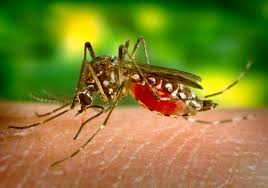
As a mosquito-transmitted virus, West Nile Virus is usually thought of as a summertime problem. However, data shows that a significant number of human cases occur after August 31.
“This fall, South Dakotans should not relax their protection efforts,” said Russ Daly, Professor, SDSU Extension Veterinarian, State Public Health Veterinarian. “While it’s true that in South Dakota, most West Nile Virus cases occur during August, in most years, new human infections are detected well into September,” Daly said.
Daly quotes a retrospective of South Dakota West Nile Virus epidemiology which revealed 17 percent of cases from 2001-2011 occurred after August 31. In recent years, cases have even been observed in October.
“West Nile Virus is a fact of life during South Dakota summers. However, realizing the threat also persists into the early fall will mean people can take steps to prevent these later infections,” Daly said.
Human cases of West Nile Virus have been detected in all 66 counties in South Dakota, over all age groups and ethnicities.
Seasonal Pattern
The seasonal pattern of West Nile Virus infection in South Dakota reflects the presence and activity of its carrier, the Culex tarsalis mosquito species.
This mosquito species, Daly explained, is prevalent throughout South Dakota, preferring to feed on birds and people.
“As the summer progresses, their feeding preference shifts more towards people, making late-summer barbecues and football games a prime focus for them,” Daly said.
Symptoms
Most people exposed to West Nile Virus show no signs of illness, as evidenced by serologic studies that find people have developed antibody responses in the absence of sickness.
However, one in five people infected develop West Nile Fever, and one in 100 go on to a more severe neuroinvasive disease – of those cases 10 percent are fatal.
Symptoms of illness occur two to 15 days after a bite from an infected mosquito.
“This makes it possible for people to develop symptoms even after mosquito activity has stopped in the fall,” Daly said.
West Nile Fever is characterized by fever, body aches, headache, rashes and swollen glands – symptoms that could be caused by a number of illnesses.
People with those symptoms should see their healthcare provider.
While there are no specific cures for West Nile Virus infections, supportive care may be necessary in some cases.
Prevention
More importantly, people should still be vigilant against mosquitoes right up until the first killing frost.
Perhaps the best line of prevention is to use insect repellents when it’s necessary to be out at night, in addition to wearing long pants and long sleeved-shirts.
While many communities have mosquito-spraying programs in place through the summer and early fall, property owners can do their part to reduce mosquito habitat by getting rid of sources of standing water.
